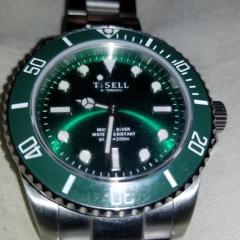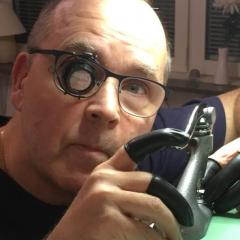Sears (Japan 5005C -0111T) divers watch repair
-
Recently Browsing
- No registered users viewing this page.
-
Topics
-
Posts
-
Maybe it's just a coincidence, but note how the epilame-treated surface is illustrated in @Waggy's post. It looks like the oil is exposed to a binder (epilame!) so that it can't move sideways.
-
By Neverenoughwatches · Posted
The epilame under the oil will also be removed Unless the oil makes a barrier between the epilame and the escape teeth 😅 I think i need two strong coffees now 🤣 -
If we use the rub-off epilame method of pallet stones (run dry for a few minutes before applying the epilame) where will the oil go/be transported when it is pushed away from the impulse surface by the escape wheel teeth? Onto the epilame-treated sections of the pallet! Once the oil has been applied/transported to the epilame-treated sections of the pallet where will it then go? Nowhere as the oil will remain on the epilame. So, perhaps the run-dry method defeats its intended purpose leaving the pallet impulse surfaces dry!? If, on the other hand, we do not remove the epilame from the pallet stones where the escape wheel teeth come in contact with them I'd expect more oil to remain where we want it and need it. Yes, I agree, that is the question, and my gut feeling tells me that is exactly the case. Epilame was created to have an adhesive trait and the oleophobic property is just a side effect.
-
By Neverenoughwatches · Posted
Might that be the viscous nature of oil resisting gravity H , we have been comparing water and hydrophobic surfaces which are similar in principle but water is much less viscous than oil. I guess what we trying to discover is if epilame also has an adhesive trait as well as being oleophobic. Plus the oil dropet has very little mass for gravity to work on, like watching tiny water beads that can grip onto vertical glass until they are connected together to increase their mass then run down. Gravity isn't the only factor at play when oil is placed on pallet stones. The oil receives a lot of bashing that may push it out of position ? Thinking about it if the oil stays in position for 10 minutes enough time for the escape wheel to scrape off the epilame , then a walled in lubrication has been achieved, the epilame is no longer beneath the oil ( possibly mixed into the oil ) -
But it also makes it seem less susceptible to gravity. If you place a droplet of oil on an epilame-treated surface the droplet of oil will still stay in place even if you then flip the surface from a horizontal to a vertical position. That is, the oil droplet remains anchored, and that's the purpose of epilame. If it was just a matter of creating an oleophobic surface we could probably use other, less expensive, methods!? I don't know @Waggy but my gut feeling tells me you're spot on (pun intended!). I believe the oleophobic property is a side effect of epilame which is designed to keep the oil anchored.
-








Recommended Posts